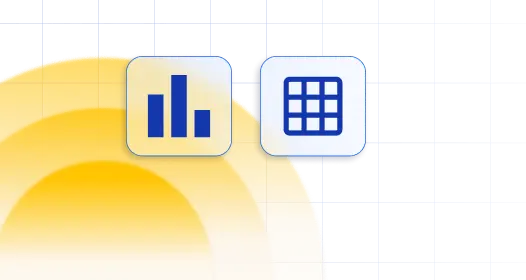


Table of Contents
Chart.js is an Open Source JavaScript graph library, which renders simple and flexible charts that work on all platforms.
The wpDataTables plugin allows inserting Chart.js in WordPress posts or pages with a simple step-by-step wizard.
The steps needed to create any chart or JavaScript graph and insert it in to WordPress post or page are explained in this documentation section (they are same for any rendering engine – Google Charts, HighCharts or Chart.js). Here we will cover Chart.js types and chart examples which are supported by the wpDataTables plugin, along with the data charts features.
A line chart is a way of plotting data points on a line. Often, it is used to show trend data, and a comparison of two data sets:
The main difference from a Chart.js line chart is that the areas below lines are colored in a selected color:
This chart type is very similar to the simple area chart, the difference being that series values are “stacked” above each other:
A column chart is a way of showing data as columns. It is sometimes used to show trend data, and the comparison of multiple data sets side by side.
This chart type is very similar to the Column chart, the difference being that series values are “stacked” above each other.
A bar chart uses rectangular bars to present data. Horizontal Bar Charts are used for displaying comparisons between categories of data.
This chart type is similar to a basic bar chart, but the series values are “stacked” to the right of each other in the horizontal bars.
A radar chart is a way of showing multiple data points and the variation between them. They are often useful for comparing the points of two or more different data sets.
Polar area charts are similar to pie charts, but each segment has the same angle – it’s the radius of the segment that differs, depending on the value.
This type of chart is often useful when we want to show comparison data similar to a pie chart, but also show a scale of values for context.
The Pie Chart renders the chart in a form of “sliced pie” where each slice stands for one series entry:
The Doughnut Chart is very similar to Pie chart, except it has an empty inner part so it’s more like a “sliced donut” rather than a “sliced pie”:
A bubble chart is used to display three dimensions of data simultaneously. The location of the bubble is determined by the first two dimensions and the corresponding horizontal and vertical axes. The third dimension is represented by the size of the individual bubbles.
To get your hands on wpDataTables Lite, please enter your email address below. We’ll send you a direct download link and keep you updated on existing features along with helpful tips and tricks!
